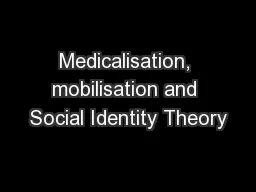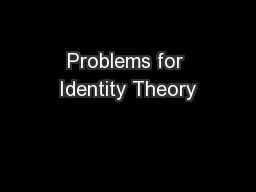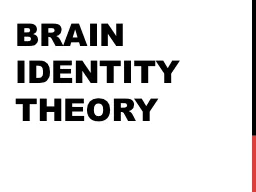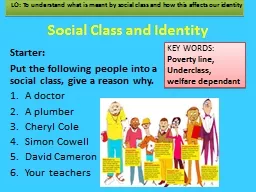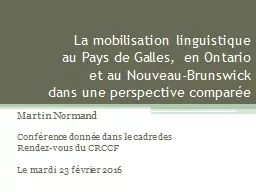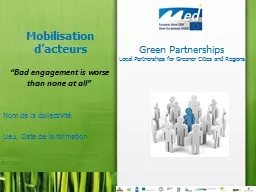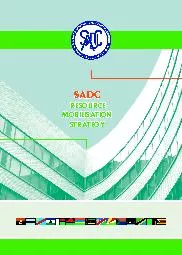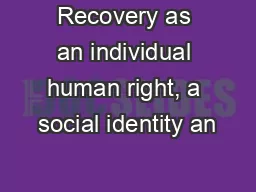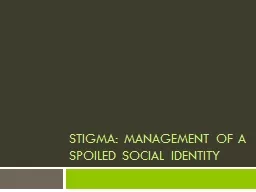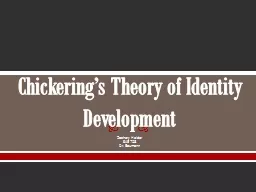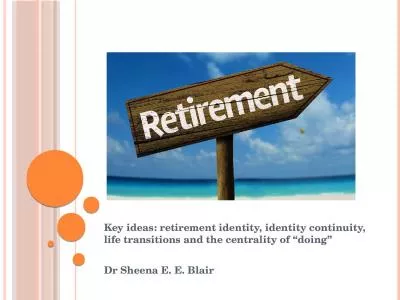PPT-Medicalisation, mobilisation and Social Identity Theory
Author : aaron | Published Date : 2017-12-20
Ginny Russell amp Jennie Hayes Prevalence and medicalisation Autism Counts Nature Nov 2011 479 p24 How conditions and behaviours outside the medical domain and
Presentation Embed Code
Download Presentation
Download Presentation The PPT/PDF document "Medicalisation, mobilisation and Social ..." is the property of its rightful owner. Permission is granted to download and print the materials on this website for personal, non-commercial use only, and to display it on your personal computer provided you do not modify the materials and that you retain all copyright notices contained in the materials. By downloading content from our website, you accept the terms of this agreement.
Medicalisation, mobilisation and Social Identity Theory: Transcript
Ginny Russell amp Jennie Hayes Prevalence and medicalisation Autism Counts Nature Nov 2011 479 p24 How conditions and behaviours outside the medical domain and previously a part of normal social life come to be considered medical conditions or problems and thus become subject to medical diagnosis prevention or treatment Conrad 1992 . Ann-Marie Bathmaker, University of Birmingham UK. Constructing and maintaining privilege in a mass higher education system: The strategies and practices of capital mobilisation amongst undergraduate students in England. More Serious Problems. Before proceeding, we need to get a bit clearer on the nature of the theory we are criticizing. . Tokens and Types. When Smart says that all mental states are brain states he could be referring to . Chomsky’s Conclusions. First, insofar as the stimulus/response talk is useful it is only useful when supplemented with internal facts about the speaker’s mental states:. Beliefs. What they are focusing on. Starter:. Put the following people into a social class, give a reason why.. A doctor. A plumber. Cheryl Cole. Simon Cowell. David Cameron. Your teachers. LO: To understand what is meant by social class and how this affects our identity. au Pays de Galles, en Ontario . et au Nouveau-Brunswick . dans une perspective comparée. Martin Normand. Conférence donnée dans le cadre des . Rendez-vous du CRCCF. Le mardi 23 février 2016. Similitudes entre les cas. Nom de la collectivité. Lieu. , . Date de la formation. “Bad engagement is worse than none at all”. Au . programme. …. Accueil café . Questionnaire d’entrée (10’). Entretien en binôme (qui je suis ? Mes attentes ?) & tour de table des participants (présentation réciproque) (30’). 1 SADC RESOURCE STRATEGY SADC Resource Mobilisation Strategy Turnkey Solution ProvidersPlot 14447 G-West Ind. Gaborone BotswanaContact: 72623416 / 73856499Email: areasdynamix@gmail.com 3 SADC Resour The Medicalisation of FGM. WHO ARE 28 TOO MANY?. www.28TooMany.org | info@28TooMany.org . WHAT IS FGM?. An extreme form of gender-based violence that affects at least 200 million women and girls worldwide . political movement. Professor David Best. Sheffield Hallam University / Turning Point . The . central values . of the centre:. widening . access to justice. promotion . of human rights. ethics . in legal practice. 2. Symbolic interactionism. Symbolic interactionism . is a . micro-level . theory based on the idea that people act in accordance with shared meanings, orientations, and assumptions. Herbert . Blumer. Zachery Holder. SAE 723. Dr. Baumann. Authur. . Chickering. Erikson’s . Theory (identity and intimacy) . Education . and Identity (1969). based . on research he conducted at Goddard . College and Small College. kindly visit us at www.nexancourse.com. Prepare your certification exams with real time Certification Questions & Answers verified by experienced professionals! We make your certification journey easier as we provide you learning materials to help you to pass your exams from the first try. kindly visit us at www.examsdump.com. Prepare your certification exams with real time Certification Questions & Answers verified by experienced professionals! We make your certification journey easier as we provide you learning materials to help you to pass your exams from the first try. Professionally researched by Certified Trainers,our preparation materials contribute to industryshighest-99.6% pass rate among our customers. Dr Sheena E. E. Blair. My disclaimer. My talk is not intended as a blueprint for how to retire or even how to reflect upon retirement. That life transition is unique and multi-layered. It requires negotiation and re-negotiation with self over time.
Download Document
Here is the link to download the presentation.
"Medicalisation, mobilisation and Social Identity Theory"The content belongs to its owner. You may download and print it for personal use, without modification, and keep all copyright notices. By downloading, you agree to these terms.
Related Documents

